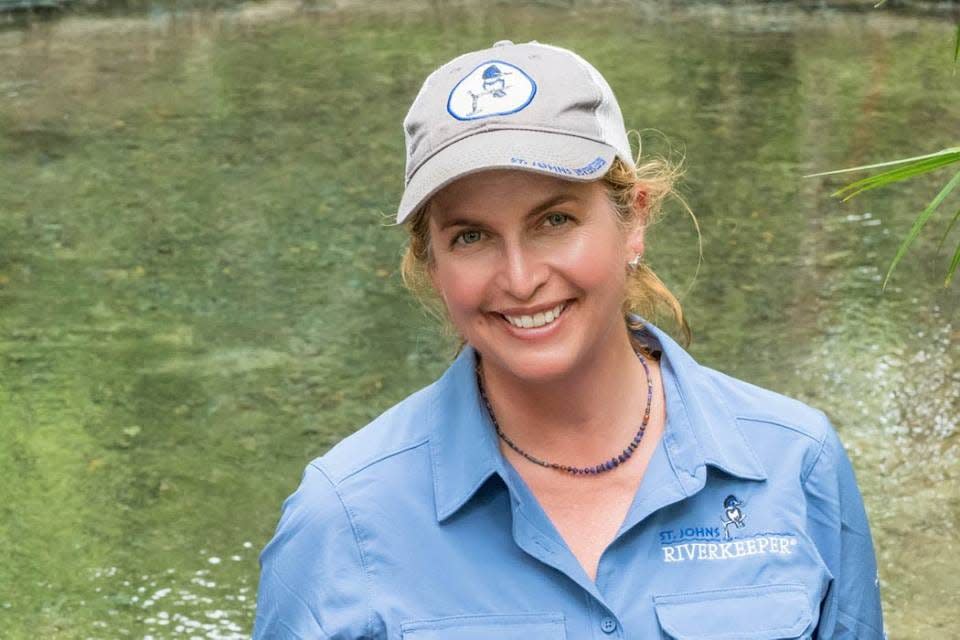Guest column: Time has come to remove Rodman Dam and restore the Ocklawaha

The St. Johns River runs through the heart of Jacksonville and Northeast Florida, shaping our lives and driving our economy. Our river is also one of Florida’s most productive estuaries and the nursery grounds for numerous species of commercially harvested fish and shellfish we love to eat.
Shrimp spawn offshore, but once their eggs hatch, the larvae migrate back to the ideal habitat of the St. Johns estuary to grow and mature. As a result, commercial and sport shrimpers enjoy the river’s bounty between Jacksonville and Palatka.
Blue crabs, the largest fishery in the river, release their eggs in the marine waters near the mouth of the river. Wind and tides will eventually carry the larvae upstream where they will find refuge in the submerged grasses that will nurture them. During the warmer months, blue crabs reach as far south as Lake George.
The St. Johns’ delicate tidal balance of salt and freshwater has historically enabled healthy underwater grasses to thrive, providing critical habitat for fresh and saltwater species that have attracted sportsmen from near and far.
Now our thriving estuary and fishing economy are at risk. Due to overuse of our aquifer, dredging and increasing saltwater intrusion, the St. Johns’ underwater grasses are disappearing, the cypress forest wetlands are stressed and fish habitat is vanishing within the St. Johns River estuary from Welaka to Palatka to Jacksonville.
The loss of our river’s submerged grasses also increase the threat of toxic blue green algae and increase flood risk throughout the lower St. Johns.
More than 50 years ago, the Rodman Dam (now known as the Kirkpatrick Dam) was built across the Ocklawaha River, the largest tributary of the St. Johns, as part of the failed Cross Florida Barge Canal. This resulted in the clearing and flooding of approximately 7,500 acres of floodplain forest, while submerging over 20 springs beneath a massive pool of water that significantly reduced freshwater flow to the St. Johns.

The boondoggle canal project was eventually halted by the federal government, but the dam remains in place after all these years.
The good news is that we have an opportunity to finally breach the dam and allow the Ocklawaha to run free, once again. By reuniting the natural connection of Silver Springs, the Ocklawaha River and the St. Johns, we can restore more than 150 million gallons of fresh water a day to our estuary, improve water quality, offset saltwater intrusion and restore habitat for fish and wildlife in the Lower St. Johns River.
A free-flowing Ocklawaha will also restore a lost migratory pathway used by numerous fish species that migrated between the Ocklawaha River and the South Atlantic Bight. Many species historically migrated far up the St. Johns and into the Ocklawaha River to feed and reproduce, including American shad, striped bass, American eel and mullet.
Unfortunately, the construction of the dam across the Ocklawaha severed this migratory pathway and fish populations in Silver Springs have sharply declined.
Few efforts to restore Florida’s biological wealth hold the prospect for such far-reaching benefits including making Northeast Florida more resilient from Welaka to Palatka to Jacksonville.
The science is clear and there is overwhelming public support based on the St. Johns River Water Management Survey conducted in October 2021, where more than 85 percent of the participants expressed a desire to restore the Ocklawaha River.
The time has come to finally restore the largest tributary of our St. Johns River and together, we can unleash the significant ecological and economic benefits of a free-flowing Ocklawaha.
To help save the St. Johns and free the Ocklawaha, visit StJohnsRiverkeeper.org.
Lisa Rinaman, St. Johns Riverkeeper
This article originally appeared on Florida Times-Union: Guest column: Time now to remove Rodman Dam, restore the Ocklawaha

